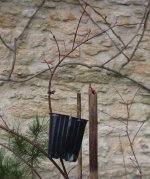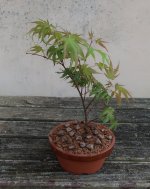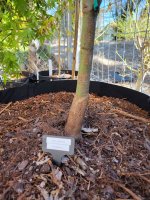Epos7
Sapling
I bought this Shindeshojo at a local nursery a few weeks ago and plopped it in a bigger pot. It's grafted, so once it finishes leafing out, I aim to air layer it. I think I can get two, maybe three trees out of it.
My question is, am I better off making the first air layer right above the graft, or near the top of the tree? Should I start at the graft and work my way up, or start at the top and work my way down? Obviously I'll only be doing one air layer at a time, so I expect I'll only do one or two this year.

My question is, am I better off making the first air layer right above the graft, or near the top of the tree? Should I start at the graft and work my way up, or start at the top and work my way down? Obviously I'll only be doing one air layer at a time, so I expect I'll only do one or two this year.





















